
Maria Rebecca Ballestra | LABRYS
Opening
Friday 20 April 2018 – 20,30 | 22,30
At Gallery SPACE TESTONI, Bologna in Via D'Azeglio 50, Friday 20 April 2018 from 20,30 all 22,30 opens the exhibition of works created for the project LABRYS Maria Rebecca Ballestra and by Giorgia Gastaldon, that during this inaugural evening together also present a preview of the monographic catalog on the project just published by De Ferrari Editore Genoa.
Labrys is a contemporary art project conceived and created visual artist Maria Rebecca Ballestra that, as the title suggests, explores the theme - symbolic and visual - of the labyrinth, taking inspiration from reading texts Julien Friedler The Truth of the Labyrinth. The project was developed during years two through nine stages, each of which has resulted in the realization of one or more artworks, the result of collaborations with other protagonists of the contemporary world (artists, choreographers, actors, writers, and so on…), and the national and international artist residencies.
In addition to works created entirely by Maria Rebecca Ballestra and in collaboration with other artists, and those made by guest artists, accompany this exhibition at Spazio Testoni six historic photographic documents on the work of Land Art Spiral Jetty realized in 1970 da Robert Smithson a Rozel Point, Great Salt Lake, Uth - Usha, and work of Aldo Spinelli The sign and symbol of the 1978, both kindly provided by UnimediaModern Gallery Genoa.
The subject "maze" is not chosen by randomly, rather: Maria Rebecca Ballestra brings forward its reflection on this theme in the light of the finding that the image of the maze, in different centuries and civilizations, It has always been invested with different meanings and "other". In the various stages of this project, in fact, the artist investigates, from time to time, a different aspect of the image and the concept of the maze and each of these reflections represents a different stage of Labrys.
Thanks to the support of the Region Friuli Venezia Giulia and the precious hospitality of the Mental Health Center Basaglia Park, the entire project - also achieved by promoting Altreforme Udine - has been reflected in a series of exhibitions, roundtables, workshops, performance, which they took place in Gorizia from October 2017 to March 2018.
The project has its roots on a solid and intricate network of technical and scientific partners. During the months of her pregnancy, in fact, numerous were the realities that have provided, in very diverse ways, their valuable contribution to the performance and to the realization of the ambitious program of Labrys.
In addition to international partners - we highlight in this regard Signal Fire Art (Arizona), The Emily Harvey Foundation in Venice Art and Spirit of Boz Foundation (Julien Friedler Association for Contemporary Art Italy-Belgium) they hosted in residence Maria Rebecca Ballestra in some of the stages of the project - there are many organizations who believed in the project thus allowing their patronage: remember, among others, the University of Udine, the Company Health Services of Lower Friuli Isontina, the City of Gorizia, The Journal of Foundations, the State Library Isontina, and the Department of Engineering and Architecture of the university of Trieste.
After the project Gorizia Labrys - characterized by a strong nomadic nature - moves to Bologna guest of the gallery Spazio Testoni, also among the partners in this project and the 2012 represents thevoro artist Maria Rebecca Ballestra.
The exhibition will remain on display until 30 June 2018.
Project website:
www.labrysproject.com
With the support and the support of:
Regione Autonoma Friuli Venezia Giulia
Health Services Company No.. 2 Lower Friuli Isontina
City of Gorizia
University of Udine
State Library of Gorizia Isontina
De Ferrari Publisher, Genoa
KB 1909
Studio Faganel, Gorizia
Kinemax, Gorizia
Agoré, Social promotion Association, Gorizia
gCguru
In partnership with:
Spirit of Boz, Julien Friedler Association for Contemporary Art (Italy-Belgium)
The Emily Harvey Foundation, Venezia
The Journal of Foundations
Signal Fire Art, Arizona (USA)
Cloud Theater, Genoa
Proballet, Sanremo
University of Trieste, Department of Engineering and Architecture
Gallery Space Testoni, Bologna
Gallery UnimediaModern, Genoa
Cloud Theater, Genoa
Proballet, Sanremo
University of Trieste, Department of Engineering and Architecture
Radio Strawberry
ISIS D’Annunzio
Max Fabiani Art School of Gorizia
Gorizia High School
High School Duca degli Abruzzi in Gorizia
European Grouping of Territorial Cooperation EGTC-GO
Graphic project Fludesign
Website Remigio Guadagnini
Catalog De Ferrari Publisher, Genoa in April 2018
Texts Giorgia Gastaldon
Translations Catherine Guardini (supervision and coordination), aja Bain (final review)
Gallery
SPACE TESTONI
Via D'Azeglio 50 – 40123 BOLOGNA
Such. +39 051371272 – 051580988
M.ph. +39 3356570830
infthe@spafromithetesttheni.it
www.spaziotestoni.it
Opening time:
Tuesday to Friday from 16.00 all 20.00
Saturday from 10,30 all 13,00 and from 16,00 all 20,00
Sunday, Mondays and other times by appointment
Panichella MAURO
Floating Venice (The last hope is the unexpected), 2015
video, 7’56”
courtesy of Emily Harvey Foundation, Venezia
Floating Venice is a video work filmed in the city streets of Venice. For the particular image-recording technique, which marks the artist Mauro Panichella, This work ends, unavoidably, to investigate the issue of threshold, the limit, of overcoming. Throughout the duration of the video, in fact, the viewer's eye "floats" on the water, forcing each of us to observe the city of Venice in a new, new point of view: what is the boundary between two fundamental elements, such as air and water. To make this work the artist has built the tools he needed, such as the "boat cam" that allowed him to make the shots so special in Venice. With this specific means he then "exploring" the length and breadth of the lagoon city, tracing inside a labyrinthine path, which provided for deviations, return to where they started, Bivi, moments of loss, then resolved into further junctions and new ways found.
BERTY SKUBER
Passages: video frames: the way in, the way out, 2016-2017
montage on canvas, 150 x 117,5 cm
Walls: Venice: a labyrinth of brick, 2016-2017
montage on canvas, 150 x 117,5 cm
Labyrinths: real, imagined, dreamed, transformed, 2016-2017
montage on canvas, 150 x 117,5 cm
The theme of the maze is always part of the work and artistic research of Berty Skubert, that in fact, she devoted to this topic, in 1977, an entire exhibition, intitolata Labyrinths and Particulars. For the artist, the image of the labyrinth is similar to the action of the thinking and in fact this issue is often associated, In his work, to that of the trajectory and of the path. A labyrinth, but, It is normally composed also by the walls that delimit the space of the walkway. Hence, therefore, the parallelism between the walls of the maze and those of the buildings that make up the city, like Venice or a Moroccan kasbah, of which we can observe a number of fragments in these works here, side by side to the example of the tree maze, certainly the "softer form" and natural attemptable of this paradigm. The route proposed by the artist in this series of three works, therefore, is clear and linear: a passage from a concrete reality (the image of the walls of city buildings) to a mental reality which is a simple and complete the previous ampiamento.
MARIA REBECCA BALLESTRA - NINA BACUN
Re-flection, 2018
33 prints on paper
42 x 29 cm each
work created during an artist residency at The Emily Harvey Foundation, Venezia
The theme of the maze like path, as a physical space that goes experimented with his own body, through the act of walking. The end result is a map psycho - geographical Venice, city where Maria Rebecca Ballestra and Nina Bacun have stayed for an artist in residence. The Re-flections work is the result of an operation of inspiration dada: the two artists involved have explored the city of Venice by following two different paths and random, dictated by an instinctive choice, different each time, adopted in the face at every intersection of two streets. The operation is comparable to a ambulation, a walking aimlessly, proceed to a purely erratic. The theme is urban immateriality, in the sense of personal experience and a virtual city that everyone can have strolling through the streets. This operation was carried out in connection with the idea, Dadaist and surrealist, that the act of take an urban space can be comparable to the paths followed by our thoughts. The work is inspired by the Dadaist practice of urban trips, launched in 1921 in Paris; the Dadaists used to walk for the city making the seemingly trivial walks of real aesthetic operations, He understood as forms of "anti-art".
JULIEN FRIEDLER
Variation 1, The Word of Angels, 2002
ink and acrylic on canvas, 140 x 100 cm
Word of Angels, untitled, 2001
ink and mixed media on canvas, 140 x 100 cm
La Parole des Anges is a pictorial cycle aimed at minting and developing a codified language and esoteric flavor from the primordial, based on a mystical sign. The alphabet with which they were made the paintings on display here, in fact, is, in fact, symbolism, a language in which each symbol corresponds to a fundamental concept of human existence (Nothingness, It gave, Fate, The Woman, The man, etc. etc). The repetition and the combination of these different symbols, therefore, allow the emergence of an articulate speech and sensible. The language of these paintings, but, It is not just a hermetic language: knowledge of the code in question, in fact, It is not that important and does not constitute the only way of interpretation of the work. This is because we are still in the presence of painting work, It characterized by a freedom of composition, the juxtaposition of signs, of color scheme. These works, therefore, Also living in their plastic self-interest and self.
MARIA REBECCA BALLESTRA - WEN CHIN FU
Inner Game, 2017
n. 6 drawings + n. 6 sounds
In Eastern culture the labyrinth is always characterized by a play value related to the size of the game. On the occasion of the Interior presentation in Gorizia, Maria Rebecca Chin and Wen have made to the Mental Health Center Park Basaglia participatory work, in which the public was invited to complete simple actions through the work of two artists. A large maze designed with ink-run hiding eight audio tracks that could be "discovered" by swiping your finger on the drawing. The end product of this participation takes the form of eight drawings by the audience accompanied by eight audio tracks that were hidden in the maze.
ALDO SPINELLI
The sign and symbol, 1978
mixed media on paper,
three panels, 57,5 x 82,5 cm each element
courtesy UnimediaModern gallery
The Aldo Spinelli work confronts the theme of the labyrinth since the seventies, when he started its first experiments of admixture between the paradigm of writing and that of the image labyrinthine. In 1972, in fact, he used for the first time nine letters forming the word "labyrinth" to compose their own image of a labyrinth, walking with his eyes and mind. In this experimentation then he gave various forms: three-dimensional - with the creation of sculptures of pins and wool thread, or maquette in wood -, graphic - with the press of his artist's books -, engraved in marble, made of environmental dimensions, and so on. Taking off from this first trial, he applied the same system to the later works, kicking off the series of labitesti - mazes created starting from the letters of an appropriate citation - or the labiritratti. In the latter cycle belongs the work here this Labyrinth Caterina Gualco, where Spinelli has created an image labyrinth starting from the letters in the name of the collector and gallery owner who, among other things, It is the owner of the work itself.
MARIA REBECCA BALLESTRA
The Island of Tears, 2017
Photographic and mirror printing
70 x 100 cm
Time overturned, 2017
prints on paper (30 x 40 cm) and stones
variable dimensions
The work is inspired by the Solovki Islands: an archipelago north of Russia - Western located close to Finland and just a few hundred kilometers from the Arctic Circle. On these islands they are preserved ancient stone labyrinths of which is unknown, to date, the original function. The Solovki Islands were also home to a large monastery, It built in the fifteenth century and desecrated at the time of the Russian Revolution, when the same cathedral was transformed into a dormitory. In the twenties of the twentieth century, finally, the monastery itself - for its location made it impossible to escape - was transformed in the first gulag of the Bolshevik regime. Maria Rebecca Ballestra has decided to dedicate a thought to the labyrinths of the Solovki Islands and legarne existence to the theme of the mystery that is connected to that of faith, for places of worship are present here. The reason for the mystery is then referable, also, the disappearance of numerous people who were imprisoned here. The paradigm of the time is work-related intellectual Russian Florenskij: held by the Soviet regime in these islands he devoted numerous publications and reflections precisely to this topic. In the second work, in fact, we find some crumpled pages taken right from his paper The reversed perspective. These sheets, portions of the thought of this philosopher and mathematician, They are no longer readable, but they have certainly not lost their meaning and in fact their content is still understandable by the individual still visible words. The observer is thus driven, almost forced, in an intuitive effort, in order to access this mystique and immaterial reflection dimension. At the center of these crumpled sheets are then present stones, representing the weight of material life, the pain of captivity; their being stones then refer to the material with which the mysterious and ancient labyrinths of these islands are constructed. These objects also rest on the mirror surfaces that remind us of the illusion that often characterizes our lives.
ROBERT SMITHSON
Spiral Jetty, 1970
Rozeol Point, Great Salt Lake, Utah (U.S.A.)
6 photographic documents
copyright Anne Gold, courtesy UnimediaModern gallery
Spiral Jetty is a work of Land Art around long 450 meters wide 5, created by Robert Smithson in 1970, with black basalt, salt crystals, land and water: all materials present in the natural environment of the place chosen. This spiral, classic effigy of unicursal maze, It allows its experiences to delve into the lake, beyond the shore, reaching the center of the path envisioned by the artist. Rozel Point Smithson chose to make this work for some fundamental qualities of this part of the US, as the almost total isolation of this place, which made the landscape in question as "natural", and less anthropomorphic, possible. In addition, the artist was fascinated by the reddish color that characterizes the water in this specific part of the lake: this shade, caused by the presence of a particular alga, the fact remembered a sort of "primordial soup". The spiral is subject to the rise and fall of the tides: It emerges and disappears continuously within the waters of the lake depending on the time of day and season of the year. The decision to build here this work was also motivated by Smithson harbored toward entropy phenomena: the high level of salinity that characterizes the Great Salt Lake, in fact, It ends up greatly accelerate the inevitable erosion of the spiral, so that continuously changes its shape and presence in space.
MARIA REBECCA BALLESTRA – Panichella MAURO
Labrys, 2017
embroideries on cotton canvas,
neon, metallic elements
variable dimensions
Quest’opera, He made four hands by Maria Rebecca Ballestra and visual artist Mauro Panichella, He shares its title - Labrys - with the whole project and for this we can say that this stage is of primary importance for the whole of research developed by the artist. Maria Rebecca Ballestra, in fact, He not coincidentally chose the term "labrys" as the title of his entire project discarding, for example, the word "Labyrinthos". This preference is related to the idea for which here did not want to deepen a particular image or the form of labyrinth. The reflection, in this case, It was in fact primarily focused on the meaning of the symbol of the labyrinth, on the investigation of his mythological and symbolic aspects, on his subconscious dimension. In this sense, the word "labrys" took on greater importance and more pregnant, as he was concentrating instance of duality. “Labrys”, in fact, It was the name by which he meant in ancient times a particular form of double ax, object representing the dilemma, the dual choice, the meeting of basic and fundamental polarity for their universality, as the male and female, the light and the dark, the positive and the negative, the poster and the unconscious. The two artists explore the theme of the labyrinth in mythology and, in particular, the myth of the Minotaur. The work is the result of a close dialogue elapsed between Maria Rebecca Ballestra and Mauro Panichella: these exchanges, intentionally occurred by means of a written correspondence, excerpts are embroidered in red on a white cloth mixed, in turn, in words from texts by Julien Friedler. The technique of embroidery on cotton cloth is not random, but he wants to bring back to our minds the image of Ariadne's Thread. The land, then, there are two plates of two different metals, fitted together to form the image of the double ax of the title. To complete the installation of this metal base rest two different colored neon remember, Once again, the duality of our existence.


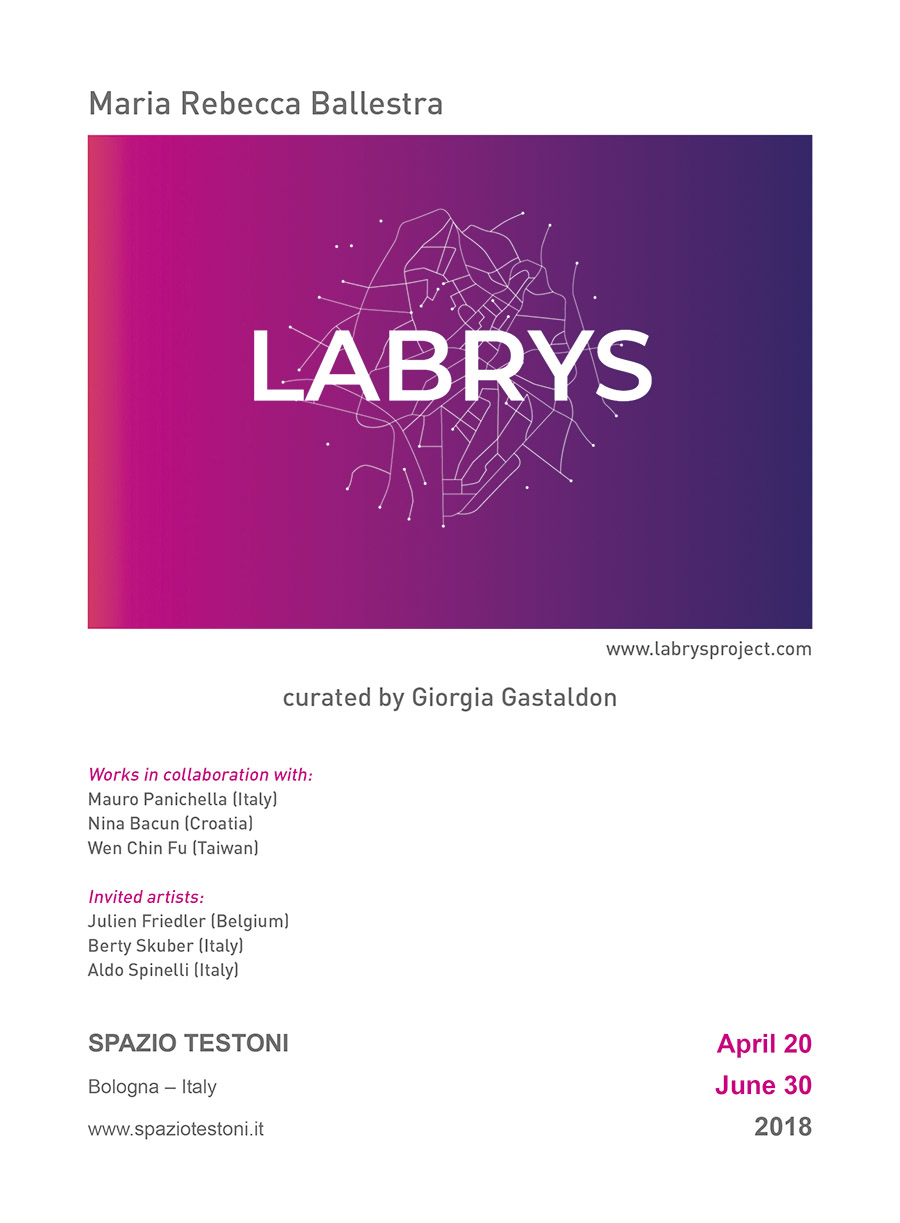

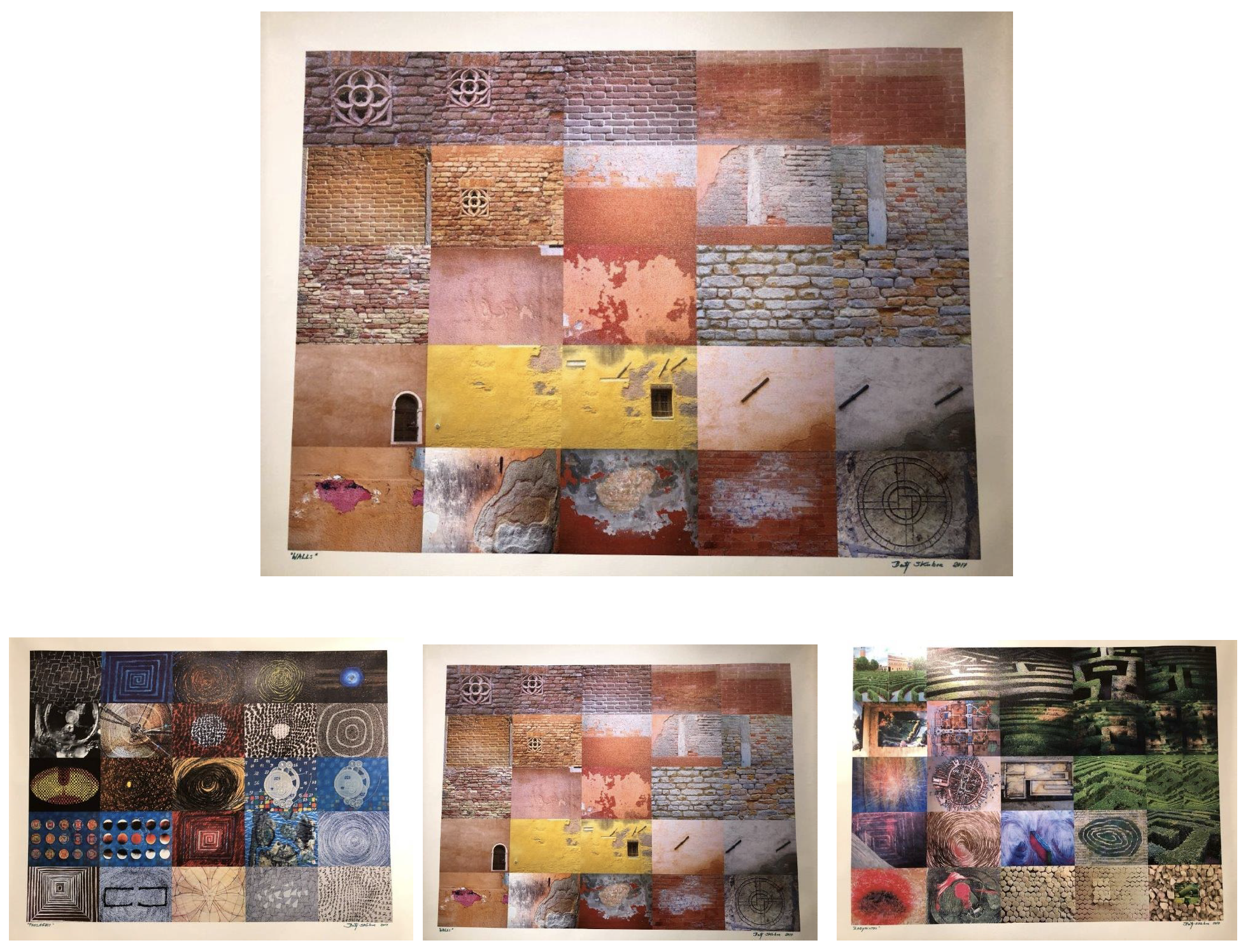
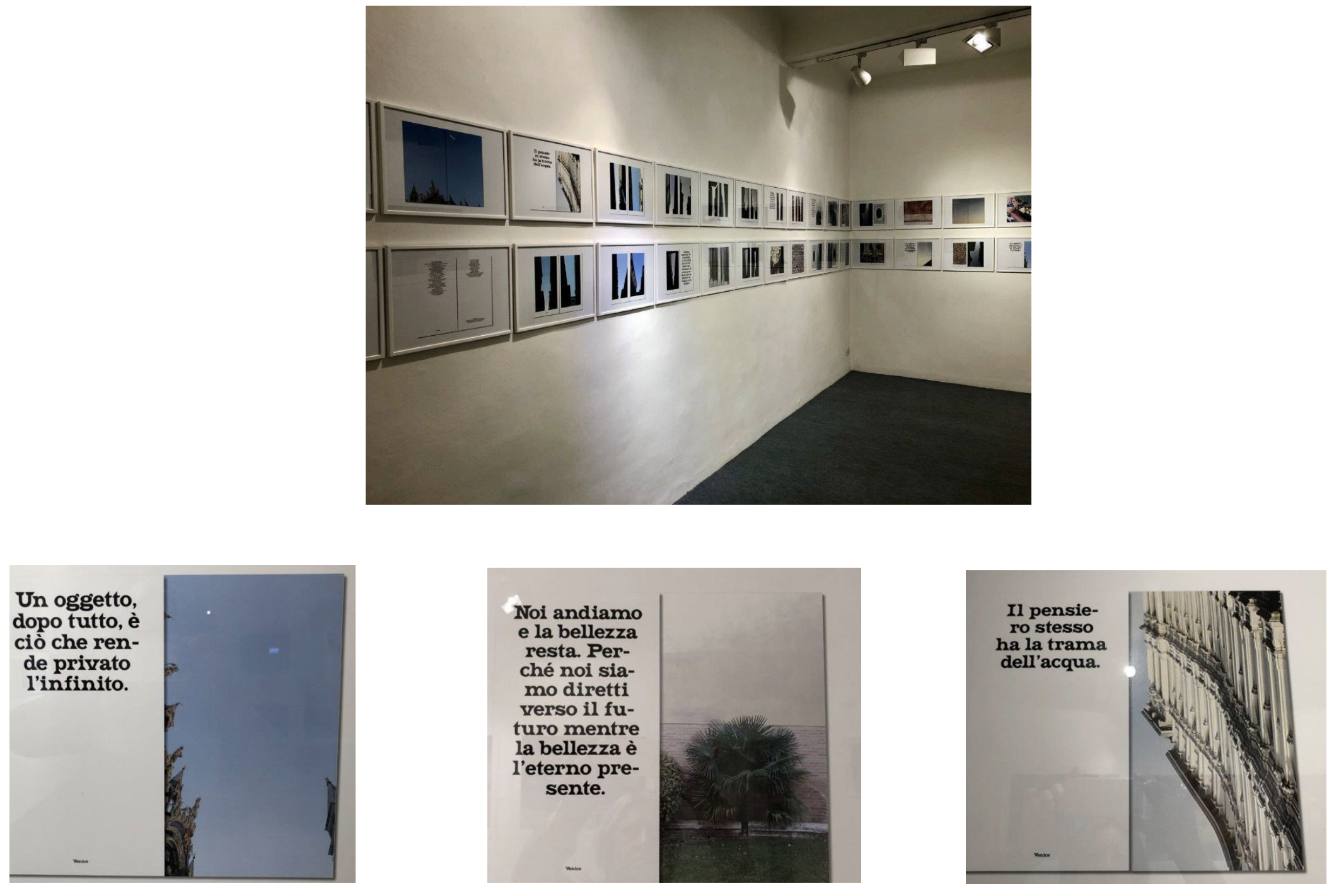

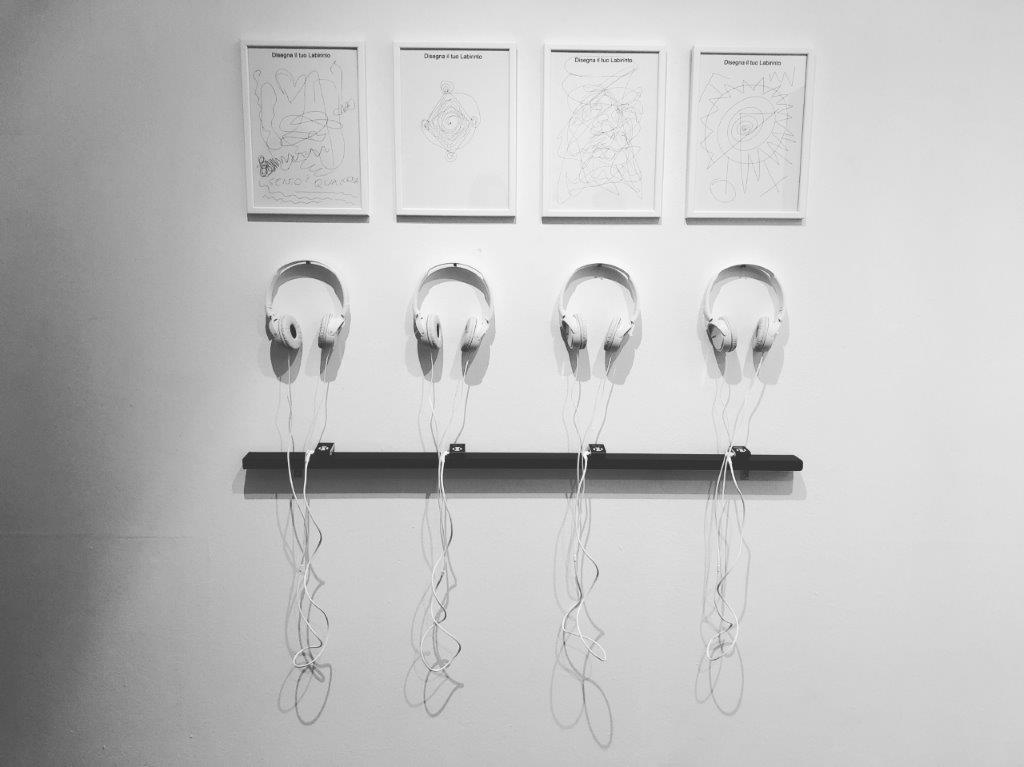
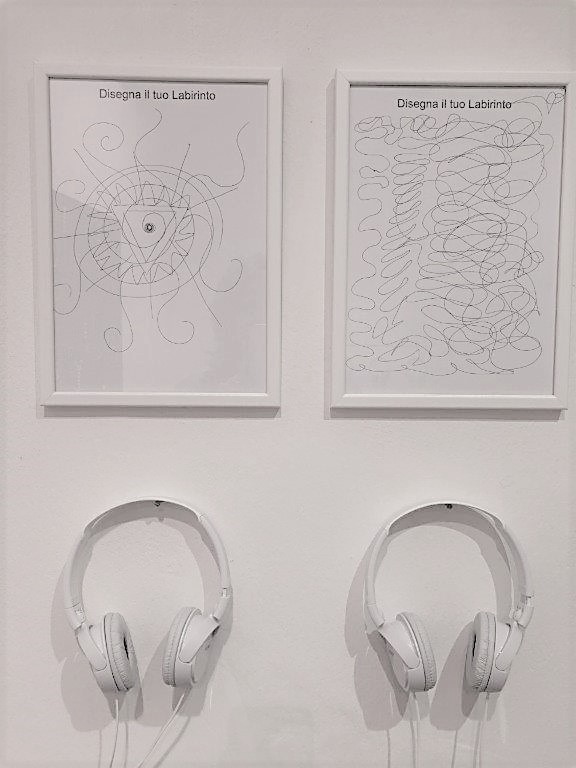



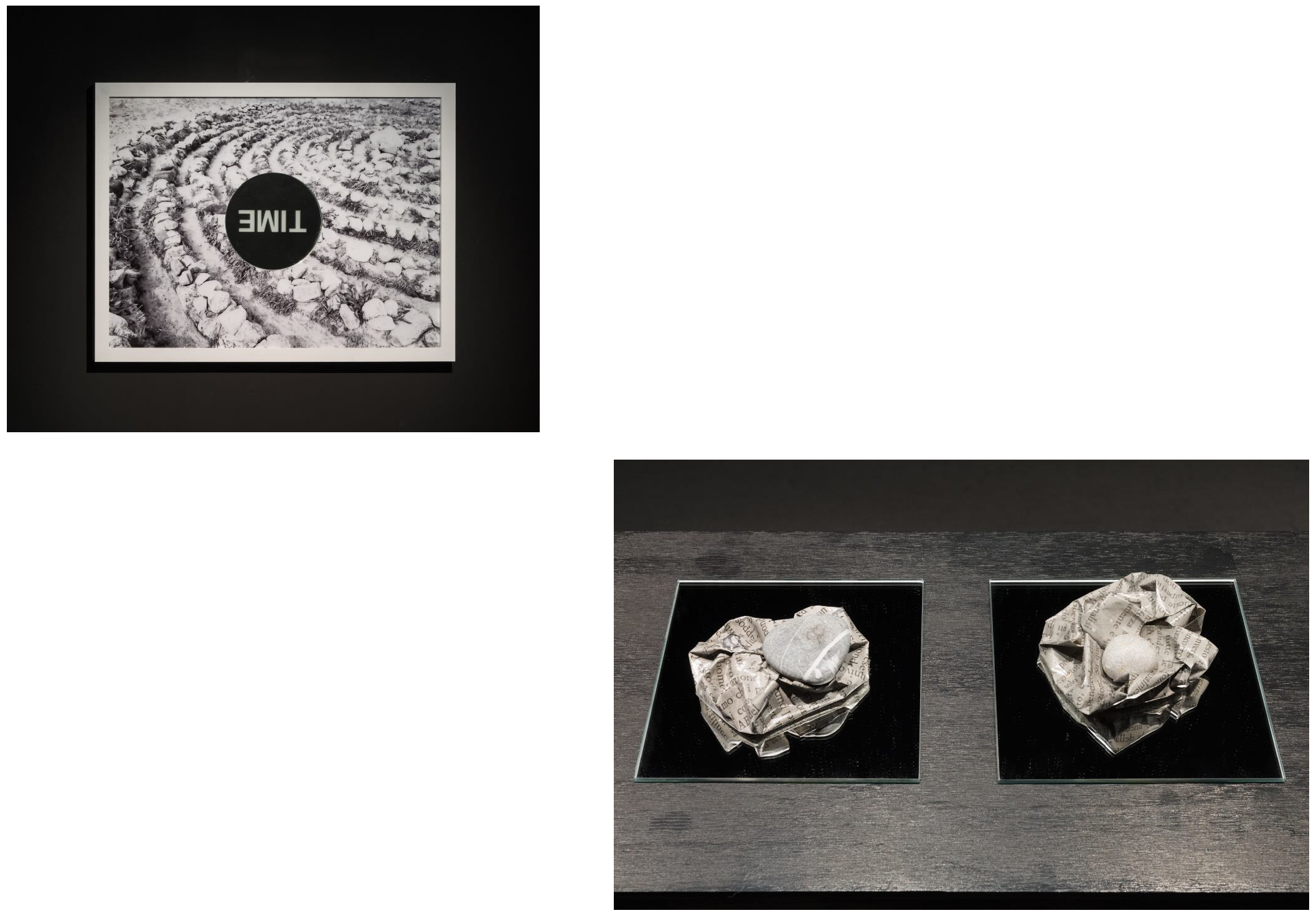
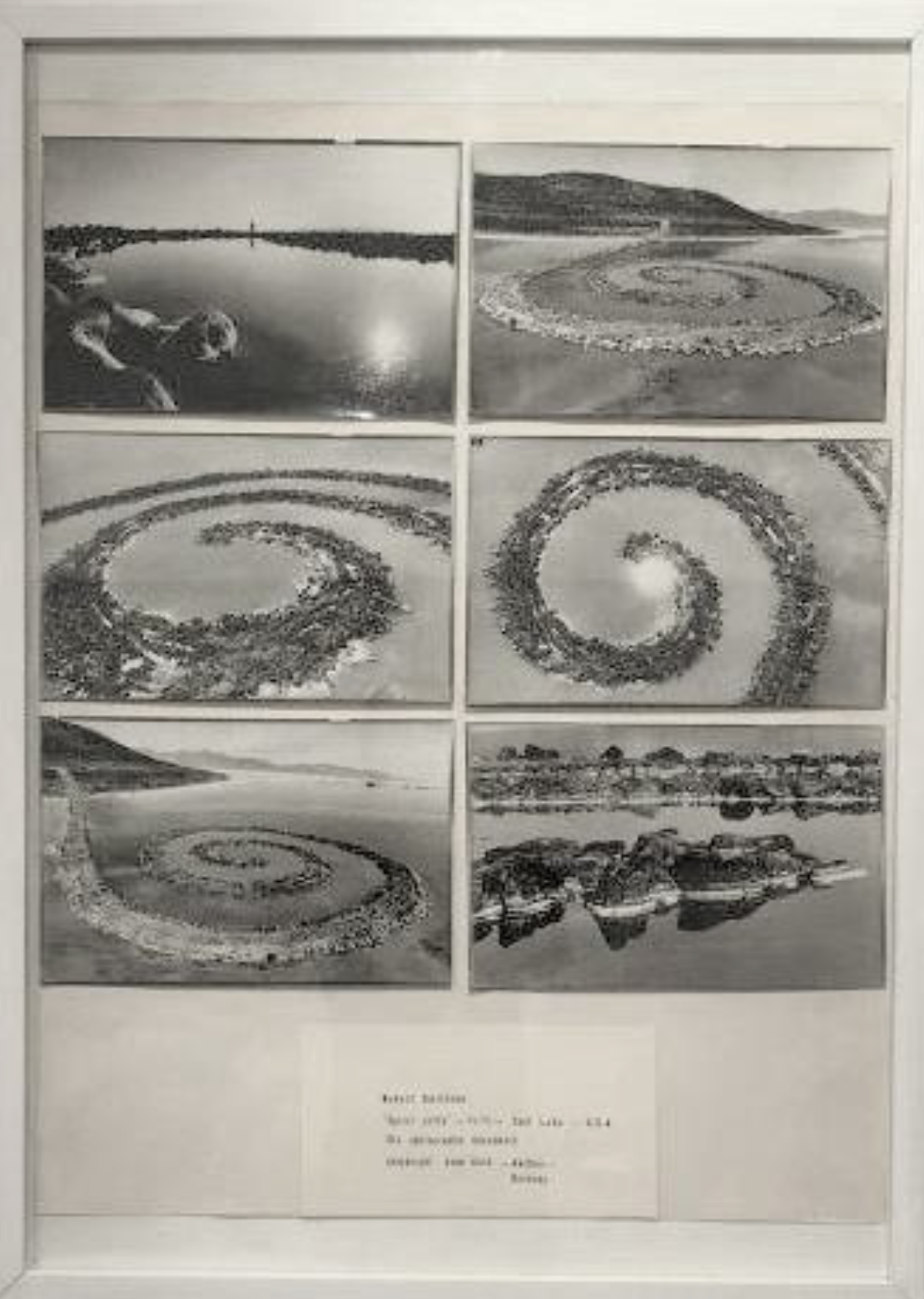

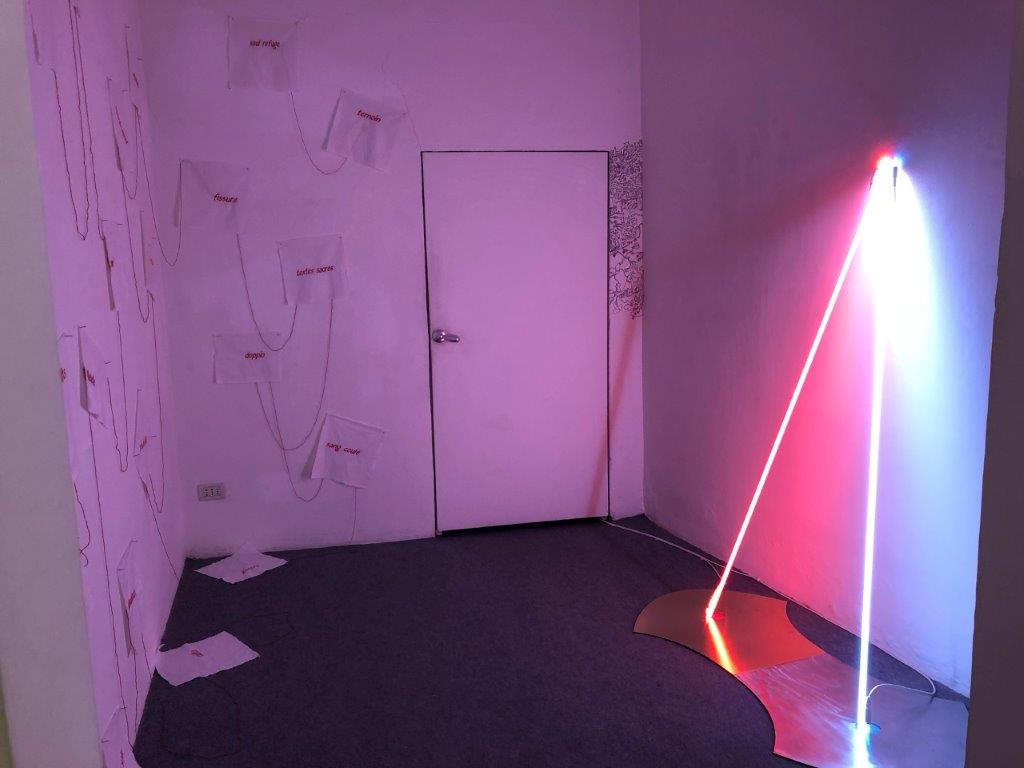
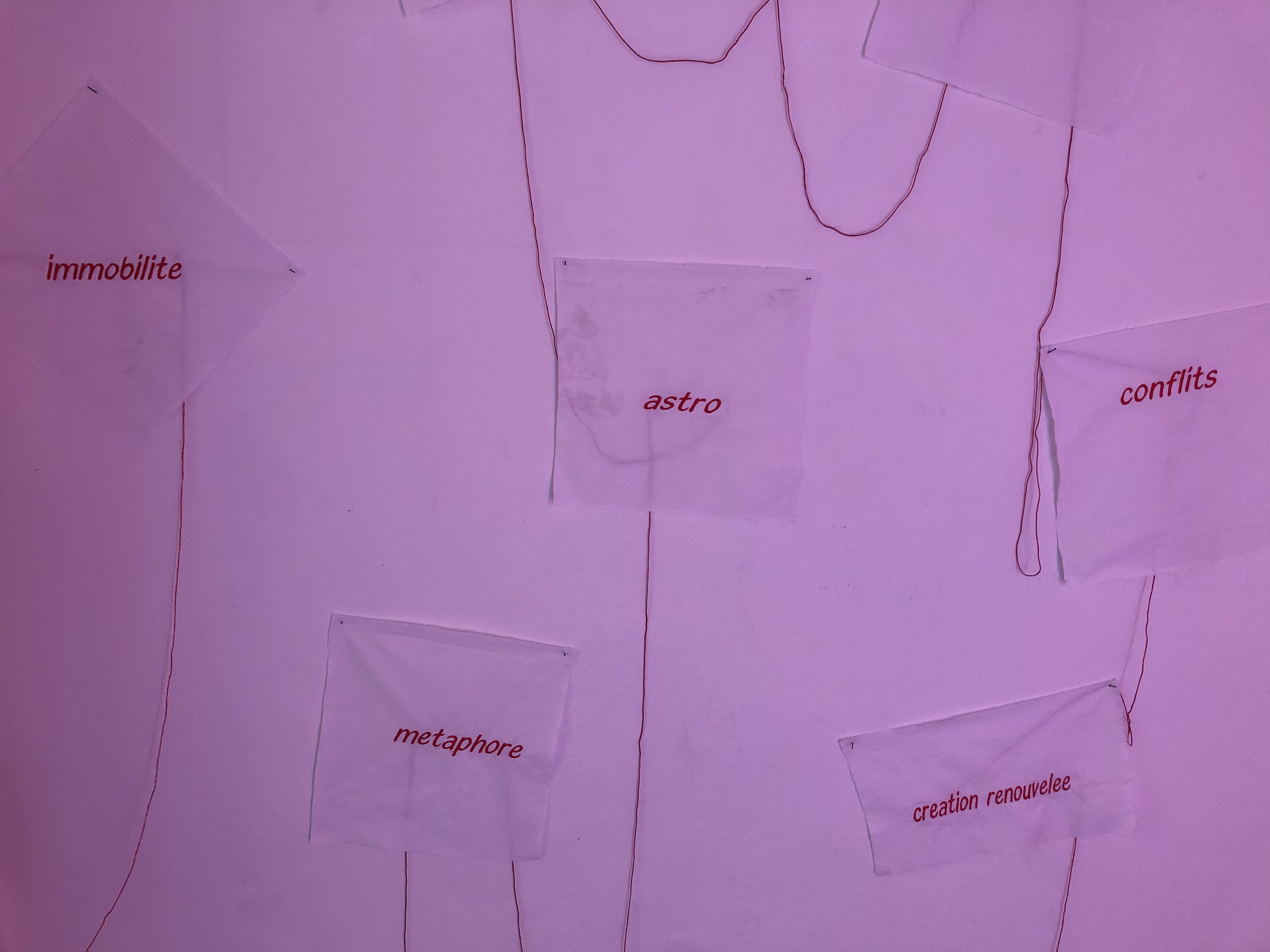




















Comments are closed, but trackbacks and pingbacks are open.